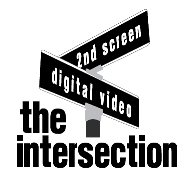The age of TVOD. He was right of course. In 2008-2009 Apple TV remained a hobby, amazing services like Vudu couldn't find a way to grow, Amazon UnBox continued to struggle to deliver real volume, and physical discs continued to defy journalists and analysts alike by maintaining the lion's share of consumer volume and dollars. Curiously, while one might have expected to see ad supported video rise from the ashes to take its place in the digital video ecosystem, a gentlemen by the name of Reed Hastings leveraged an idea of subscription DVD into the idea of subscription all you can eat digital video, and Netflix became an industry behemoth practically overnight.
The era of SVOD. Netflix poured its effort into building a large catalog (50k+ titles) of mostly 2nd-tier content, but invested in getting the Netflix app on practically every device that shipped in the CE industry, famously showing slides of 800+ devices. Jason Kilar took his queue and starting trying to morph Hulu from a "free" and slightly ad supported catch-up service on the web to an ad-supported plus subscription service in the connected living room.
But isn't that odd? In those mythical 37 hours of video we supposedly all watch every week, the vast majority of it is monetized through advertisement, not cable (HBO, Showtime) or transactions (PPV, Blockbuster). Yet, even in 2010-2011, Hulu had to combine subscription and ad supported revenue models to satisfy their other channels (retransmission fees paid to Cable MSO) and to make up for a lack of scale and to fuel development of the multi-hundred connected device apps required to reach the living room.
The rise of AVOD. But things change quickly in the digital economy, and the market is ready to rapidly push in a new direction. On one hand, Barry Diller and his Aereo are assaulting pay TV providers, forcing the content owners to question the long term viability of retransmission fees. Simultaneously, smartphones and tablets are proliferating at a rate faster than any other device in history, stealing the crown from the previous giant--the DVD player. In the last 12 months, Business Intelligence says that the majority of digital video views has shifted from the connected living room (Xbox, Apple TV, Roku) to mobile (tablets, smartphones). Finally, the technology is now finally available that had alluded Mark Cuban's (and then Yahoo's) Broadcast.com and every major player since the late 1990s--the ability to deliver to any device in the connected living room or on the mobile web a "TV-like" experience. That means the ability to both play a stream of curated content sources continuously while at the same time monetizing those streams through dynamic ad insertion.
Contributing to this perfect storm has been the absolute splintering and extreme fragmentation of content, driving TV network ratings down by more than 50% over the last 10 years, while mobile video ad CPMs are now finding themselves rising above their analog brethren in value in nearly every professional content category.
Companies like FreeWheel and Videoplaza have arisen to help make the dynamic ad decisions a reality, ad networks exchanges like Brightroll and Adap.tv have blossomed to help buy and sell side advertisers reach their audience, and technology service providers like Unicorn Media are now able to deliver the content and ads stitched together in real-time, enabling the mobile web (ie no apps) to be monetized and the connected living room to extend to more devices for less cost.
What's all this mean? Digital video is growing at a 25% CAGR right now (see the inserted graph from BI), primarily due to the proliferation of smartphones and tablets and the viral effect of the social networking world (Twitter, Facebook). Major sports networks like ESPN are able to monetize those buzzer beaters and slam dunks in ways that previously weren't possible--with mid- and post-roll video ads, and sports leagues like MLB are finding millions of consumers who are willing to pay $120 per season to watch games on the devices at hand, whether a tablet or an Xbox. And in an age where authenticated TV Everywhere rules, March Madness made nearly every game available through its 2nd Screen app via video pre-rolls and the CW has taken the very bold step of launching its content on Xbox and the iPad without authentication (ie ad supported).
We should expect to see network simulcasts of key events become the norm very quickly, but with dynamically inserted ads instead of the ads from the analog broadcast stream--meaning hyper personalization of advertising. Expect the FIFA World Cup in 2014 to be a great example of this.
We should further expect the hyper personalization of content to become the norm. No longer will you watch a cat video and then be dumped out to a screen asking you to choose another video--similar to the other 30+ hours of TV you watch in the living room, the video stream will keep rolling, inserting ads and content chosen explicitly for you, driving video consumption higher and increasing the monetization for content owners and distributors all the while.
The dawn of ad supported video is here. Expect to start hearing the term AVOD (vs. SVOD - Netflix, and TVOD - iTunes) in just about everything you read. Journalists and analysts love to write about anything with a 25% CAGR.
Welcome to the age of multi-screen digital video with dynamic ad insertion -- the TV industry's bright and growing future.


No comments:
Post a Comment
Note: Only a member of this blog may post a comment.